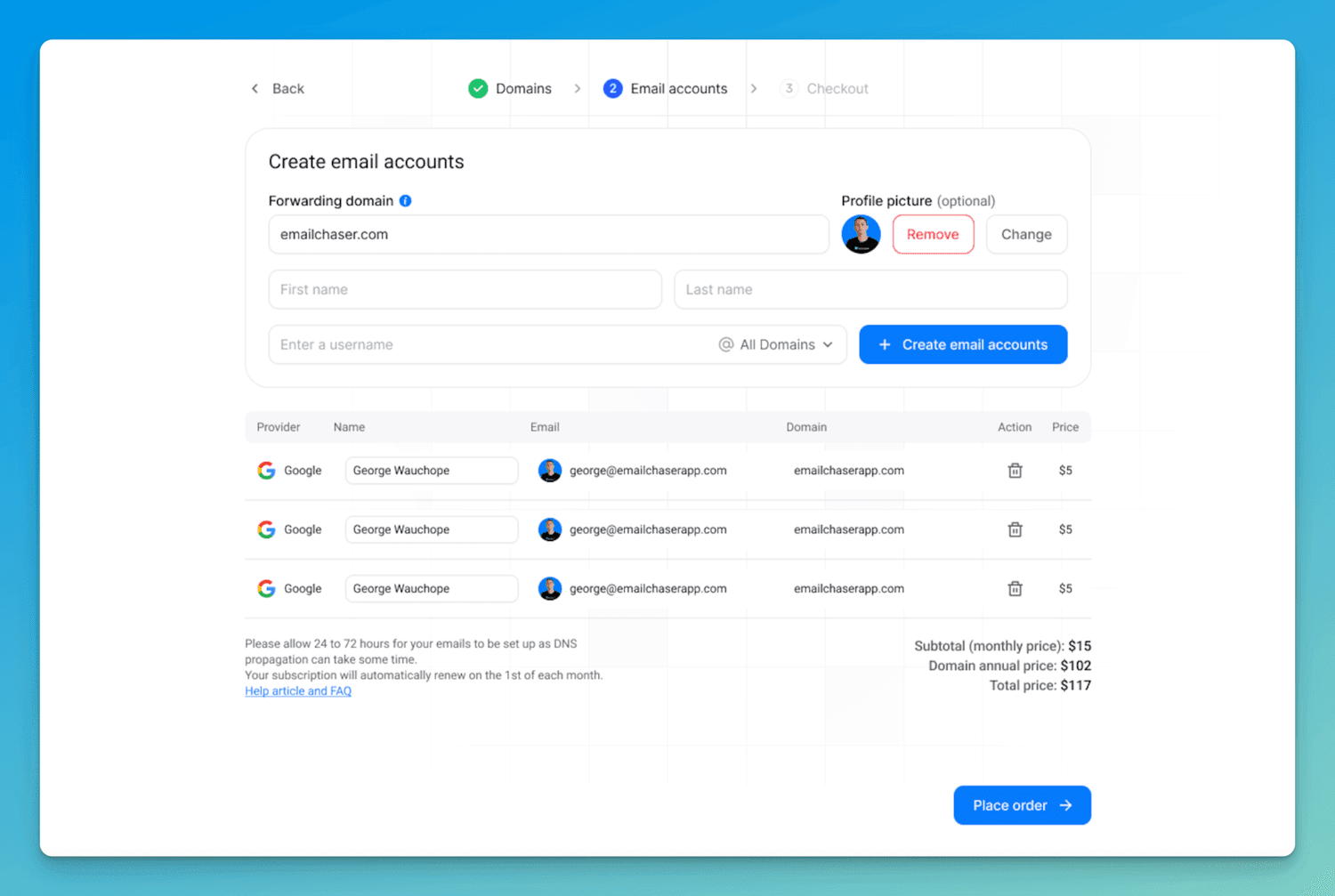Should You Send Cold Emails From Your Primary Domain?
Updated January 2026
You should NOT send cold emails from your primary domain.
If you send cold emails from your primary domain, then you risk “burning” (blacklisting) your domain.
In this article, I will explain everything you need to know about sending cold emails and which domain to use:
- What is a primary domain?
- Why is it a bad idea to send cold emails from your primary domain?
- What is the solution? (secondary domains)
- Final thoughts
What is a primary domain?
A primary domain is the domain associated with your company’s website.
For example, I am the founder of Emailchaser. My company’s website is https://www.emailchaser.com/
My primary domain is emailchaser.com
If I was sending cold emails from my primary domain, then I would be sending them from [email protected]
Later in this article, I will explain why this is a bad idea (and what you should do instead).
Why is it a bad idea to send cold emails from your primary domain?
The reason why it is a bad idea to send cold emails from your primary domain is because you risk “burning” (blacklisting) your domain.
Email service providers (such as Gmail and Outlook) do not want people to send spam emails. If they think an email account is sending spam, then they will blacklist the domain associated with that email account.
This means that all emails sent from any email account associated with the blacklisted domain will go to spam. There is no way to fix this.

If you are not experienced with cold email, and you make a mistake (such as sending too much volume) when sending from your primary domain, then email service providers will blacklist your company’s real domain.
This means that all of your team members who have their official email accounts set up on your company’s primary domain will now be using blacklisted email accounts.
When your team members send each other emails, or even to your vendors or partners, all of their emails will go to spam (even if you aren’t sending cold emails).
What is the solution? (secondary domains)
The solution is to send cold emails from secondary domains.
This protects your primary domain, so that if something goes wrong, and an email service provider blacklists your domain, then it won’t affect your company’s real domain.
For example, if my company’s primary domain is emailchaser.com, then I will not send cold emails from this domain. Instead, I will set up the following email accounts on secondary domains:
[email protected]
[email protected]
[email protected]
[email protected]
[email protected]
etc.
The easiest way to set up email accounts on secondary domains for cold email is by using Emailchaser's "done-for-you" setup service.

Frequently asked questions
What happens if you send cold emails from your primary domain?
If you send cold emails from your primary domain, then you risk burning (blacklisting) your company’s real domain.
What if you are sending a low volume of cold emails?
If you send a low volume (less than 20 emails per day), then you probably won’t have any problems sending cold emails from your primary domain. However, it’s best that you still send from a secondary domain to be safe.
Final thoughts
You should not send cold emails from your primary domain.
If you do, then you risk “burning” (blacklisting) your company's real domain, which will cause all emails (including internal emails) sent from your team members to go to spam.
Instead, you should use secondary domains.
I recommend that you use Emailchaser's "done-for-you" setup service to quickly set up email accounts for your cold email campaigns.
Article by
George Wauchope
Founder of Emailchaser.
I have been working in the sales & marketing industry for nearly a decade.
When I’m not working on my business, I enjoy eating sushi & doing jiu-jitsu.
About the author
Address: 151 Calle de San Francisco San Juan, Puerto Rico
Email: [email protected]
© Copyright 2026 Emailchaser
